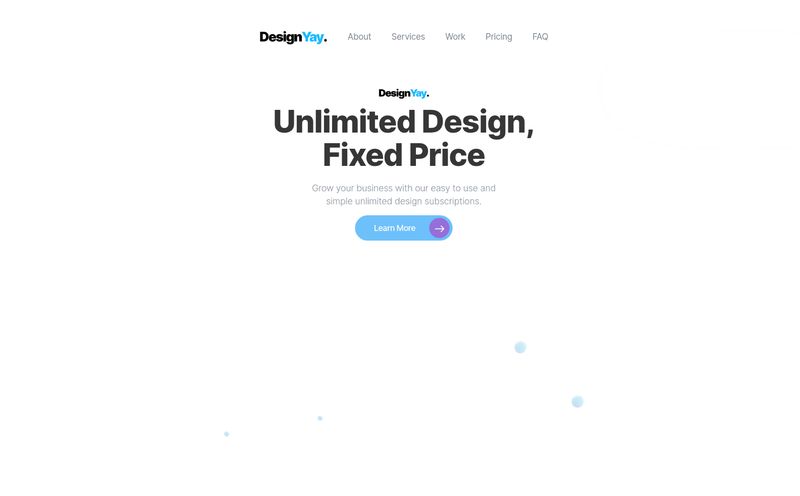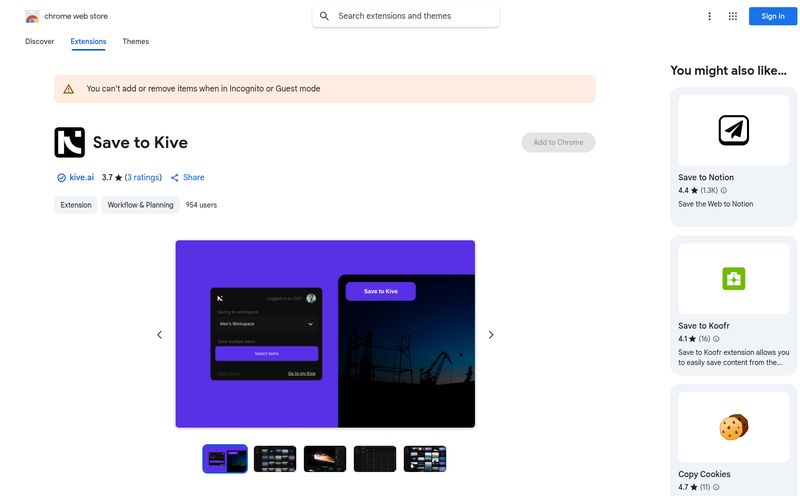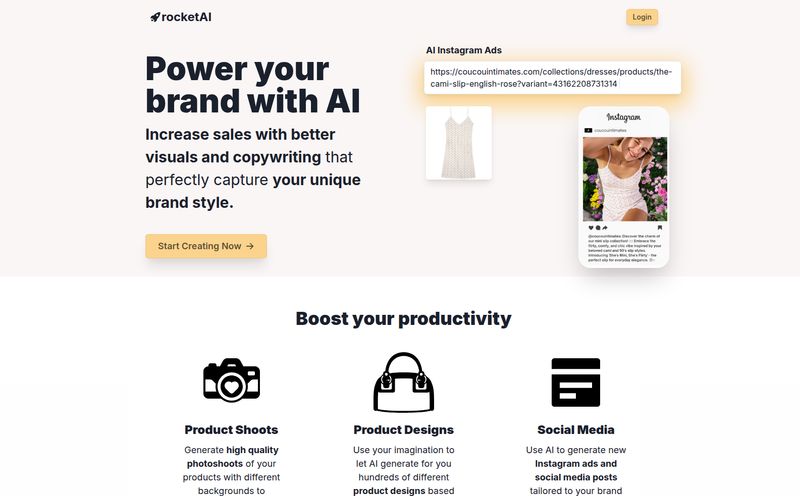We've all been there. You're scrolling through Pinterest or Instagram, your board overflowing with images of serene, minimalist Japanese homes. Tatami mats, clean lines, that perfect sense of calm... and then you look up at your own living room, a glorious mess of mismatched furniture and 'stuff' you swear you'll sort out one day. The gap between inspiration and reality can feel like a canyon, right?
For years, achieving that authentic Japanese or Japandi look meant either hiring a pricey interior designer or spending countless hours trying to decode the principles of wabi-sabi and minimalism yourself. It’s a lot of work. But recently, a new wave of AI tools has promised to change all that. One that caught my eye is Jife, a platform that claims to bring Japanese living—from design to cuisine—right to your fingertips.
So, naturally, I had to take it for a spin. Is it just another gimmick, or could this be the design co-pilot we’ve all been waiting for?
First Off, What Is Jife Anyway?
At its heart, Jife is an AI-powered platform designed around the Japanese aesthetic. The company positions it as a tool for experiencing Japanese living through three main avenues: interior design, cuisine, and fashion. You can supposedly get AI-generated recipes from your leftover ingredients or get fashion tips inspired by Tokyo street style.
But let's be real, the star of the show, and what we're all here for, is the AI interior design generator. This is the feature that’s plastered all over their site, and frankly, it's the most compelling part. It promises to take a simple photo of your room and transform it into a Japanese-inspired sanctuary. A bold claim, for sure.
Putting the AI to the Test: My Design Experience
The process itself is refreshingly simple. There's no complex software to install or a steep learning curve. It's a straightforward, four-step dance:
- Upload Your Photo: You start by snapping a picture of the room you want to redesign. I chose my slightly-chaotic home office, a prime candidate for a zen makeover.
- Choose the Room Type: You tell the AI what it's looking at—a bedroom, kitchen, office, etc. This helps it understand context.
- Select Your Style: This is the fun part. You get to choose from different Japanese styles. We’re talking options like Modern Japanese, the ever-popular Wabi-Sabi, and more. I’ve always been a sucker for the imperfect, textured look of wabi-sabi, so I went with that.
- Generate: You hit the button and let the AI do its thing. In a few moments, it spits out a handful of design variations based on your original photo.
The results? I was genuinely surprised. It wasn't just a generic filter slapped on top. The AI understood the layout of my office—the window placement, the desk area—and reimagined the space with appropriate furniture, color palettes, and textures. It was like looking through a kaleidoscope of possibilities for my own room. Some designs were a little… out there, but a few were legitimately stunning and gave me concrete ideas I hadn't considered.

Visit Jife
The Good, The Not-So-Good, and The AI Quirks
No tool is perfect, especially in the fast-moving world of AI. After playing around with Jife for a while, I’ve got a pretty good handle on its strengths and where it could improve.
What I Really Liked
The sheer ease of use is a massive win. Unlike broader AI image generators like Midjourney, which can feel like wrestling a creative octopus to get what you want, Jife is incredibly focused. You're not trying to conjure a 'cyberpunk Japanese tea room in the style of Van Gogh'; you're giving it a clear task, and it delivers on that specific promise. It’s a fantastic ideation engine. Stuck on a layout? Don’t know what color to paint the walls? Jife provides a visual starting point that's miles better than a blank slate. The variety of styles within the Japanese theme is also a nice touch, showing they understand the aesthetic isn’t monolithic.
Some Things to Keep in Mind
My main gripe, if you can call it that, is the credit system. This isn't an all-you-can-eat design buffet. Each generation costs credits, and you’ll burn through the initial free ones pretty quick if you're experimenting a lot. To do anything serious, you'll need a subscription. This is standard practice for tools like this, but it's something to be aware of. Also, the quality of the output is heavily dependent on the quality of your input photo. A blurry, poorly lit picture will yield… well, blurry, poorly conceived designs. Garbage in, garbage out, as the old saying goes. So use good lighting and a clear shot for the best results.
Let's Talk Money: A Look at Jife's Pricing
So, what does it cost to get this AI design assistant on your team? Jife has a tiered subscription model that seems geared towards different types of users. It took me a minute to parse it, so here’s a simple breakdown.
| Plan | Price | Best For |
|---|---|---|
| Light | €2.99 | The absolute beginner or curious homeowner. You get 40 credits (about 8 generations) to test the waters, but your images will have a watermark. |
| Basic | €9.99 | This feels like the sweet spot. You get a hefty 400 credits, no watermark, and a commercial license for one person. Perfect for serious DIYers or freelancers. |
| Premium | €49.99 | The power user plan. With 2400 credits, you're set for multiple projects. This is likely for small design agencies, stagers, or real estate professionals. |
| Professional | Contact for Price | The enterprise-level solution with unlimited everything and even the option for a custom-trained AI model. For the big leagues. |
The pricing seems fair for the value, especially the Basic plan. For less than the cost of a couple of fancy coffees, you get a powerful tool that can save you hours of guesswork.
Who Is Jife Actually For?
After my testing, I see a few key groups who could really benefit from this tool:
- Homeowners & Renters: Anyone feeling stuck in a design rut. It's a low-cost way to get high-quality inspiration that's tailored to your actual space.
- DIY Renovators: If you're planning a project, Jife can help you visualize the end result before you even pick up a paintbrush. It helps bridge that scary gap between concept and execution.
- Interior Designers: While it won't replace a designer's expertise, it could be a fantastic tool for rapid mood boarding and presenting initial concepts to clients.
- Real Estate Agents: The potential for virtual staging is huge. Transforming an empty or dated room into a beautifully designed space could be a game-changer for listings.
It's a surprisingly versatile tool that caters to both casual users and professionals, which I appreciate.
Frequently Asked Questions About Jife
How many credits does one design generation use?
Based on the Light plan, 40 credits get you 8 AI-generated pictures. This works out to about 5 credits per image, which seems reasonable for getting a unique render of your space.
Can I use Jife for free?
Yes and no. You can generate a few images for free to see how it works, but they will have a watermark. For any serious use, you’ll need to subscribe to one of the paid plans to get more credits and remove the watermark.
Is the commercial license on the Basic plan worth it?
Absolutely, if you're a professional. If you're an interior designer, marketer, or real estate agent using these images for business purposes (like in a client presentation or a property listing), the license is a must-have for legal protection. For personal use, it's not a concern.
Can I cancel my Jife subscription at any time?
Yes, the FAQ on their site confirms that you can cancel your subscription whenever you'd like. This is great for flexibility—you could subscribe for a month to plan a big project and then cancel.
Can the AI be customized for my specific company's style?
It can! The 'Professional' plan specifically mentions a "Custom trained model on your images." This is a high-end feature for businesses that want the AI to generate designs in a very specific, branded aesthetic. It's not for the casual user, but a powerful option for agencies.
Final Thoughts: Is Jife Worth Your Time and Money?
So, the big question. Is Jife the future of interior design? Maybe not the entire future, but it's a fascinating and powerful glimpse of it. It won’t replace the nuanced skill of a human designer, who can consider the flow of a home, the feel of a texture, and a client's personality. But that's not its goal.
Jife is a brilliant starting block. It’s a muse. A tool for breaking through creative blocks and visualizing possibilities you might never have imagined. For anyone who has ever admired the serene beauty of Japanese design but felt intimidated by it, Jife throws the door wide open. It’s fun, surprisingly effective, and a genuinely helpful tool for crafting a more intentional and beautiful living space. And in my book, that’s a definite win.
Reference and Sources
- Jife Official Website - The platform at the center of this review.
- What Is Wabi-Sabi? - An excellent article from Architectural Digest explaining the core principles of the wabi-sabi aesthetic.


